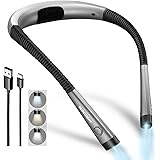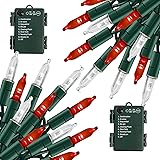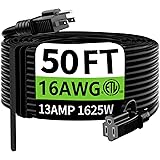Have you ever found yourself in the midst of decorating, only to discover a string of lights refusing to shine, plunging a perfectly planned display into darkness? The frustration of identifying a single faulty bulb or a blown fuse in a seemingly endless string of lights is a common experience, leading many to simply discard entire sets prematurely. The video above introduces a tool designed to transform this arduous task into a quick and efficient process: the **Light Keeper Pro**.
This innovative light tester has become an invaluable asset for anyone regularly dealing with decorative string lights, especially during the festive season. It is understood that a significant amount of time can be wasted on traditional troubleshooting methods, which often involve checking each bulb individually. The Light Keeper Pro, however, is equipped with a suite of features that drastically reduce the time and effort required to get your lights glowing again. Its effectiveness lies in its multi-functional design, addressing the most common points of failure in series-wired light strands.
Understanding the Common Challenges of String Light Repair
Before delving into the specific features of the Light Keeper Pro, it is helpful to understand why string lights often fail. Most decorative light strands are wired in a series circuit. This means that if one bulb burns out or is removed, it breaks the entire circuit, causing a section or the entire strand to go dark. Modern light sets often incorporate a “shunt” within each bulb. A shunt is a tiny wire designed to reroute electricity around a burned-out filament, ideally keeping the rest of the strand lit. However, these shunts don’t always work as intended, or they can become corroded or damaged over time, failing to close the circuit.
Other common issues include:
- Blown Fuses: Many light strands are protected by small fuses, typically located in the male plug, which blow when an electrical surge or short circuit occurs, protecting the entire set from damage.
- Loose or Corroded Bulbs: A bulb that isn’t seated correctly or has corroded contacts can prevent current from flowing.
- Damaged Wires: Small nicks or breaks in the light string’s wiring can also interrupt the circuit.
Addressing these issues without a specialized tool often involves a painstaking bulb-by-bulb inspection, followed by trial-and-error replacements. This process is known to be incredibly time-consuming, frequently leading to unnecessary frustration and expense.
Core Features of the Light Keeper Pro for Efficient Troubleshooting
The Light Keeper Pro light tester integrates several key functionalities, each designed to simplify a particular aspect of string light repair. As highlighted in the video, its efficiency is unparalleled, significantly cutting down troubleshooting time.
The Shunt Clearing “Gun” Feature
One of the most praised features, often referred to as the “gun” by users, directly addresses issues with shunts. When a section of lights goes out, it is often due to a faulty shunt that has failed to complete the circuit. The narrator demonstrates how a half-set of lights was quickly repaired using this function. The process involves removing a single bulb from the non-working section, inserting the Light Keeper Pro’s plug into the empty socket, and pulling the trigger. This action sends a pulse of electricity through the light strand, clearing any debris or corrosion that might be preventing the shunt from closing. The instructions suggest that this can be clicked up to 30 times if necessary, but as shown in the video, the lights often come back on after just a few attempts.
Statistical observations by users indicate that this method is remarkably effective, fixing the problem approximately 50% of the time. This is a substantial improvement over manually inspecting dozens of bulbs. Once the shunt is cleared and the section illuminates, the original bulb can be reinserted, and the lights are expected to remain functional. This targeted approach saves immense amounts of time that would otherwise be spent in a general bulb-by-bulb search.
Audible Voltage Detector for Pinpointing Breaks
Another crucial feature is the audible voltage detector. This function allows for the tracing of electricity along the light strand to identify precisely where the power flow stops. By simply pressing a button, the device emits a tone when held near a working bulb, indicating that voltage is passing through. The recommended approach is to start at the beginning of the light strand, near the male plug, and systematically move towards the non-working section.
The absence of a tone indicates a break in the circuit at or before that specific bulb. While the majority of breaks are found closer to the beginning of the strand, it has been observed in rare cases that voltage might run in reverse, prompting a check from the opposite end if initial attempts prove unsuccessful. This method systematically narrows down the area of concern, allowing for a focused repair rather than a broad, unfocused search for the problem. Identifying the exact point of voltage loss is a critical step in effective string light repair, as it points directly to the location of the faulty component.
Integrated Bulb & Fuse Testers for Comprehensive Checks
The Light Keeper Pro is also equipped with a built-in bulb tester, allowing individual bulbs to be quickly checked for functionality. As demonstrated in the video, if a bulb is suspected of being faulty, it can be removed from the strand and inserted into the tester. A quick illumination confirms whether the bulb itself is operational. This is particularly useful when dealing with bulbs that appear physically intact but may have a broken filament. In many instances, what appears to be a bad bulb might simply be a misaligned wire, as illustrated in the video where a small wire was bent and easily corrected, restoring the light.
Furthermore, the device includes a fuse tester, located on the back. Users can simply place a fuse between two metal contacts, and a light on the device will illuminate to confirm if the fuse is working correctly. This eliminates the guesswork associated with visually inspecting tiny fuses, which can be challenging even for those with good eyesight. Given that fuses are a common point of failure, having an immediate way to test them contributes significantly to overall troubleshooting efficiency.
Additional Practical Features and Benefits
Beyond its primary diagnostic capabilities, the Light Keeper Pro also incorporates thoughtful design elements that enhance its utility and user experience.
- Bulb Removal Tool: Many users struggle with removing stubborn or recessed miniature bulbs from their sockets, often resorting to tools that can damage the socket or the bulb itself, or even risking injury to fingernails. The Light Keeper Pro features a small notch or clip specifically designed to assist in safely extracting bulbs, preventing frustration and potential damage.
- Onboard Storage Compartment: For added convenience, a small storage compartment is included on the side of the device. This is ideal for keeping spare bulbs, fuses, or even small repair tools readily accessible, ensuring that all necessary components are at hand during a repair task. This prevents the common scenario of having to hunt for replacement parts in the middle of a project.
- Battery Operated: The device operates on three small watch batteries, which are typically included with the unit. While these batteries require eventual replacement, their compact nature allows the Light Keeper Pro to be a portable and cordless solution, usable wherever your light strands are located, without the need for an external power source during operation.
The combined effect of these features is a reduction in the time spent troubleshooting and repairing by a significant margin. What might typically take hours of painstaking effort, often ends up being resolved in minutes with the help of this dedicated string light repair tool. This makes the Light Keeper Pro an indispensable item for anyone who values their time and aims to extend the life of their cherished decorative lights rather than contributing to unnecessary waste.










